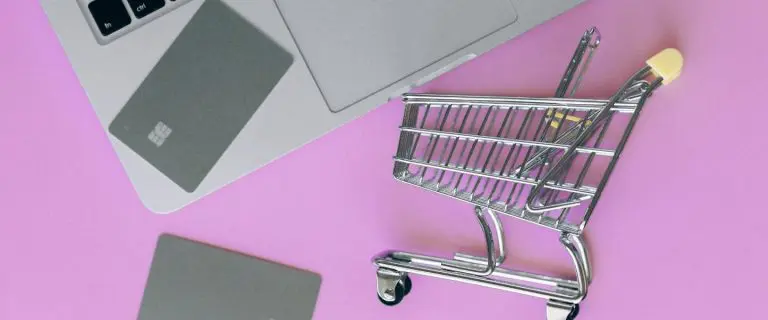Port strikes, rail strikes, Canada Post strikes, it seems like we just can’t get a break from crisis. So let’s add another one on top: tariffs.
Where strikes have a relatively predictable impact, the looming threat of tariffs brings unpredictability: we do not know what, we do not know when, and we do not know how these tariffs will affect us.
This uncertainty can be crippling, it’s difficult to make decisions based on something so uncertain to happen. However, as supply chain professionals we are no strangers to uncertainty.
Although we cannot prevent tariffs from happening, we can certainly model the effects of tariffs on our supply chain costs and make informed decisions on how to move forward. This will still partlybe like a bet, albeit an informed bet and not a blind one. In Dutch, we have a saying: “A forewarned person counts for two” – in my opinion this is also true for businesses.
How will supply chains be impacted
Supply chains will be impacted by tariffs, the question is where. If we map the impacted areas, we can model options to mitigate the impact as much as possible and make the best choice possible.
Some effects can end up macro-economic, some effects will manifest at the product mix level, and some effects will affect your cost.
Cost Impacts
Tariffs obviously impact the cost of buying raw materials or finished goods if imported, and this will change the price at which you can sell, and the value of the inventory you have.
This can have an impact on the working capital available or your cash flow, it can lead to short-term reductions in your cash-to-cash cycle as well if you pay your suppliers before you sell your products at the increased rates.
Macro-economic effects
In terms of economic conditions, we’ll likely face something close to a recession, or lower spending by consumers in anticipation, or because of layoffs or other effects. Tariffs will impact the price at which you can sell goods to stay profitable, while the money consumers have available does not necessarily increase.
This leads to reduced consumer spending. It’s important to layer in these economic effects in your business planning as they’ll influence your revenue and cost-base.
This is an S&OP activity that will impact labour requirements, costs, cash flow and revenue and unit forecasts.
Product Mix Effects
When consumers have less money available to spend on goods, a typical strategy for them is to buy the same product but at a lower price. Meaning they’ll choose the cheaper option or brand over the more expensive option or brand.
Consumers divert their spending to lower quality products or keep spending on critical products versus nice-to-have’s. Hence macro-economic effects cannot simply be applied to your product forecasts. Some products will see unit increases, while others see unit drops more excessive than the overall macro-economic effect.
Price sensitivity analysis is required to estimate the impact of price changes. With this information you can adjust forecasts.
Mitigation strategies
Mitigation strategies will help you reduce the impact of price changes, they are ways to optimise your costs under the new conditions. As the cost of products changes, so will certain design principles you have applied to your supply chain change.
For a tariff, the following mitigation strategies, or alternatives exist which you should consider.
Forward buying
One mitigation strategy companies have started to deploy is forward buying of raw materials and finished goods. Instead of following their regular order cycle, they buy and import months and months of inventory.
This will of course have other cost implications as you’ll increase the investment of working capital and significantly lengthen your cash-to-cash cycle. As a rule of thumb, if you divide the tariff % by the yearly holding cost (as a percentage of unit price) you’ll have the maximum amount of forward buys you should do.
E.g. if the tariff ends up being 25% and your inventory holding costs are 20% – the math tells us that we can buy up to 1.25 years’ worth of product and still end up with the same cost as if we would’ve bought with the tariff.
This is straightforward to calculate, but dangerous. Holding costs are merely an estimate and will change if your warehouse capacity and cash position are severely constrained.
Let alone product obsolescence, which will increase, and more importantly: you won’t have any cash available to invest in newer product lines, putting a large strain on your business in terms of risk. Forward buys therefore will have to be deployed with extreme caution.
Technically storage costs, cost of working capital and product obsolescence are all incorporated in the holding cost calculation; however, they only hold true under normal circumstances.
If you decide to buy more than a year’s worth of inventory for all your products, they will not end up the same.
Local suppliers
Other mitigation strategies would be working with local suppliers, who might end up more expensive, but without the tariffs, could become competitive.
Important here as well is to remodel your inventory holding costs as their short lead time will significantly reduce your inventory buffers, thereby reducing your costs.
Reduce order cycles
As the cost of a product will change under the tariffs, this means that the optimal quantity to buy of a product changes as well.
More orders per year is now the more viable strategy, as keeping inventory becomes significantly more expensive. You can run an Economic Order Quantity analysis using the new and the old price and analyse the differences.
This could have other implications on your supply chain teams as you might have to hire more people to deal with the increase in orders that have to be handled.
Simulate your strategies
To get to the best possible strategies, you will have to simulate a few scenarios that are viable. Based on the impact scenarios, and the different mitigation strategies, you can design the following simulations where you will estimate total supply chain costs:
Forecast scenarios:
- Leave forecast as-is.
- Lower forecast to reflect changing customer behaviour and price changes.
Mitigation scenarios-buying:
- No forward buy
- Do a forward buy 3 months
- Do a forward buy 6 months
- Do a forward buy 9 months
- Change to a local vendor
Mitigation scenarios-ordering:
- Leave order cycles.
- Decrease order cycles by 25% (order 50% more often).
- Decrease order cycles by 50% (order twice as often).
This gives a few viable scenarios to test that we can combine in logical ways. You could run an experiment combining, for example, 1af, which is your current world with tariffs applied.
For scenario 2bg you’d be testing lower forecasts while buying forward 3 months and decrease your order cycles. For every scenario, you can calculate the total costs, which will be a combination of holding costs, order and transportation costs. This should allow you to pick which mitigation strategies will work best for your business.
Conclusion
Tariffs are unpredictable, but as supply chain professionals we should be able to have a pretty clear picture of what their impact will be.
For this we need tools to model its expected impact, and design scenarios which are both realistic and beneficial.
Eventually it’s up to leadership to decide which way to move forward. A bet, but an informed one.





